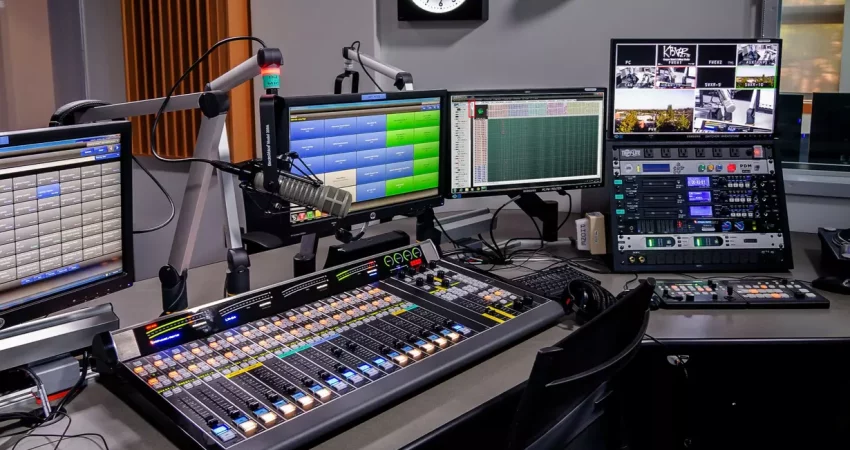
In an age where digital media is rapidly evolving, radio stations must adapt to maintain their relevance and efficiency. Radio station software is a crucial tool that can significantly enhance broadcasting efficiency, streamline operations, and improve overall productivity. This article explores how implementing the right software can transform radio broadcasting, enabling stations to deliver high-quality content while optimizing their workflows.
Understanding Radio Station Software
Radio station software encompasses a variety of tools designed to manage different aspects of radio broadcasting. From scheduling and automation to content management and analytics, this software provides the essential features needed to operate smoothly in today’s competitive media landscape. By automating repetitive tasks and providing data-driven insights, radio station software helps broadcasters focus on what they do best: creating engaging content.
1. Automated Scheduling and Playback
One of the primary functions of radio station software is its ability to automate scheduling and playback. This feature allows stations to plan their programming in advance, ensuring that shows, music, and advertisements are aired at the right times without manual intervention.
Benefits:
- Consistency: Automation ensures that programming is consistent, reducing the risk of errors and missed broadcasts.
- Time Savings: Broadcasters can set up schedules in advance, freeing up time for creative tasks such as content development and audience engagement.
Example:
A station can automate its entire weekly schedule, including music playlists and commercial breaks, allowing staff to focus on live shows and listener interactions.
2. Streamlined Content Management
Efficient content management is essential for any radio station. Radio station software simplifies the organization and retrieval of audio files, metadata, and playlists, making it easier for broadcasters to access the content they need quickly.
Key Features:
- Centralized Library: A centralized audio library allows users to store and manage all audio files in one place.
- Metadata Management: Users can easily edit and manage metadata, ensuring that all information associated with audio files is accurate and up-to-date.
Benefits:
Streamlined content management reduces the time spent searching for files, enabling broadcasters to deliver content more efficiently and maintain a high level of professionalism.
3. Enhanced Collaboration and Communication
In a typical radio station, multiple team members work together to create and deliver content. Effective radio station software fosters collaboration by providing tools that facilitate communication among team members.
Key Features:
- User Permissions: Role-based access allows team members to collaborate effectively while maintaining control over sensitive information.
- Integrated Messaging: Some software solutions include integrated messaging tools that enable team members to communicate in real time.
Benefits:
Enhanced collaboration leads to improved workflow, ensuring that all team members are on the same page and can contribute effectively to the broadcasting process.
4. Real-Time Analytics and Reporting
Understanding audience behavior is crucial for the success of any radio station. Radio station software often includes analytics and reporting tools that provide insights into listener demographics, engagement metrics, and content performance.
Key Features:
- Dashboard Analytics: Real-time dashboards allow broadcasters to monitor key performance indicators (KPIs) at a glance.
- Custom Reports: Users can generate customized reports based on specific metrics, helping to inform programming and marketing strategies.
Benefits:
With access to real-time data, radio stations can make informed decisions about their content, optimize programming schedules, and tailor marketing efforts to better engage their audience.
5. Streamlined Advertising Management
Effective advertising management is crucial for generating revenue in radio broadcasting. Radio station software can automate various aspects of ad management, making it easier for broadcasters to sell and schedule advertisements.
Key Features:
- Automated Ad Scheduling: The software can automate the scheduling of ads, ensuring that they are played at the right times without manual input.
- Inventory Management: Easily track available ad slots and manage bookings in real time.
Benefits:
Streamlined advertising management increases efficiency, allowing broadcasters to focus on creating compelling content while maximizing revenue opportunities.
6. Improved Listener Engagement
Engaging with listeners is vital for building a loyal audience. Radio station software often includes tools that facilitate listener interaction, such as contests, polls, and social media integration.
Key Features:
- Listener Feedback: Tools to collect listener feedback and suggestions help broadcasters understand their audience’s preferences.
- Social Media Integration: Integration with social media platforms allows stations to promote content and interact with listeners in real time.
Benefits:
By enhancing listener engagement, radio stations can foster a sense of community and loyalty, ultimately leading to increased listenership and revenue.
7. Compliance Management
In the broadcasting industry, compliance with regulations is paramount. Effective radio station software helps manage compliance by providing tools to track and document necessary information.
Key Features:
- Automated Compliance Reporting: Generate reports to ensure compliance with broadcasting regulations and licensing agreements.
- Tracking Features: Monitor the use of copyrighted materials and ensure that all content meets legal requirements.
Benefits:
Effective compliance management reduces the risk of legal issues, allowing broadcasters to focus on delivering quality content without worrying about regulatory concerns.
Conclusion
Radio station software plays a vital role in enhancing broadcasting efficiency by automating processes, streamlining content management, and improving listener engagement. From automated scheduling and real-time analytics to compliance management and enhanced collaboration, the right software can significantly transform how radio stations operate. As the media landscape continues to evolve, investing in effective radio station software will be essential for broadcasters looking to stay competitive and deliver high-quality content to their audiences.















